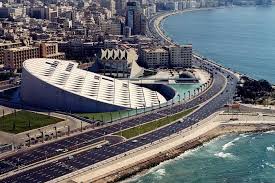The unique gastronomy of Sardinia and gastrotourism
 Sardinia is one of the two largest Italian islands, which is located west of mainland Italy, in the center of the Mediterranean Sea. Unlike its closest neighbor, the French island of Corsica, whose territory consists of large mountain ranges for three quarters, the mountainous landscape of Sardinia is quite smooth. The sparsely populated areas of the island are distinguished by their pristine beauty: they abound in dense forests and natural ponds bordering small desert areas. The uniqueness of the nature of the island in its exquisite simplicity and naturalness. And as you know, it is nature that determines the cuisine of the territory. In the case of Sardinia, this is especially true.
Sardinia is one of the two largest Italian islands, which is located west of mainland Italy, in the center of the Mediterranean Sea. Unlike its closest neighbor, the French island of Corsica, whose territory consists of large mountain ranges for three quarters, the mountainous landscape of Sardinia is quite smooth. The sparsely populated areas of the island are distinguished by their pristine beauty: they abound in dense forests and natural ponds bordering small desert areas. The uniqueness of the nature of the island in its exquisite simplicity and naturalness. And as you know, it is nature that determines the cuisine of the territory. In the case of Sardinia, this is especially true.
Throughout the world, Sardinian gastronomy is known as the “centenarian cuisine”: it has been scientifically proven that sardines (not to be confused with sardines!) Live longer and healthier lives. Of course, not only the gastronomy of the region affects this feature: a favorable climate for life, proximity to the clear sea, an unhurried way of life of the inhabitants of the island, as well as genetics, without it, play their role. And yet it is the kitchen that deserves special attention. The uniqueness of Sardinian gastronomy lies not in the use of new technologies or special ingredients, but just the opposite: it is based on high-quality, natural products and respect for the centuries-old traditions of cooking.
Gastronomy of Sardinia is at the same time similar to the usual Italian cuisine, and differs from it. As in mainland Italy, the island prizes its own cheeses: Pecorino, Kalju and Pecorino Sardo, made from exclusively Sardinian sheep’s milk. Cheese is an important ingredient in traditional Sardinian desserts: it is added as a filling to deep-fried seadas pies and cheesecakes pardoulas, a traditional Easter treat of the region.
The usual spaghetti is being replaced by dry and fresh pasta of unusual shapes: malloredus, shaped like dumplings, kulurgiones, common in the province of Olliastra – a variety of ravioli, noodle filindeus, typical of the Morgongiori pasta lorigittas in the form of rings and, finally, dry pastarega Sardinian risotto analogue, which can also be used as a side dish or added to soup.
The favorable geographical position of Sardinia determines the abundance on the tables of the sardis, as well as in the menu of local eateries and restaurants, dishes of fresh fish and marine reptiles. Grilled shellfish, eel, sea bass or bream, various tuna varieties, snails, sea urchin, scallops and Sardinian delicacy of bottarga, dried tuna or mullet caviar are favorite delicacies of tourists tired of endless pizzas, pins, pasta and lasagna.
Special attention should be paid to Sardinian Karasau bread, which is still cooked according to the recipe of ancestors. Due to its weightlessness and sonorous crunch, Karasau became known as “musical paper”. According to legend, long before dawn, women from all over the neighborhood gathered and prepared the dough, and before sending it to the oven, they prayed that the bread would come out good. Then they sat for hours by the stove and shared stories and secrets in the morning silence. After firing, crispy airy bread appeared on the tables, a symbol of taste and generosity, which retained freshness and aroma for several days. Today, Karasau bread is an important attribute of the meal of the Sardinian family.
Finally, Italian gastronomy is impossible without wine. This is especially true for Sardinia: almost every corner of the island has its own winery. Although you can endlessly sort out grape varieties, talk about aging periods and technology, one cannot forget about the only Sardinian wine. Sardis know for sure that the Cannonau wine with a three-thousand-year history is an invariable part of the “long-lived diet”. Kannonau is a black grape variety common in the northeastern provinces of the island. The secret of the “elixir of life”, as it is often called, is in its unique composition – it contains three times more antioxidants than other varieties, which brings ten times more benefits to the cardiovascular system.
Thanks to the original recipe, high quality products and centuries-old culinary traditions, Sardinia has gained popularity among gastro-enthusiasts and has become an important point on the map of gastronomic tourism, especially popular in the past few years.
Together with the Italian National Tourism Agency (ENIT), we invite you to familiarize yourself with a selection of gastrotourism options for every taste and budget that will not leave anyone indifferent.




